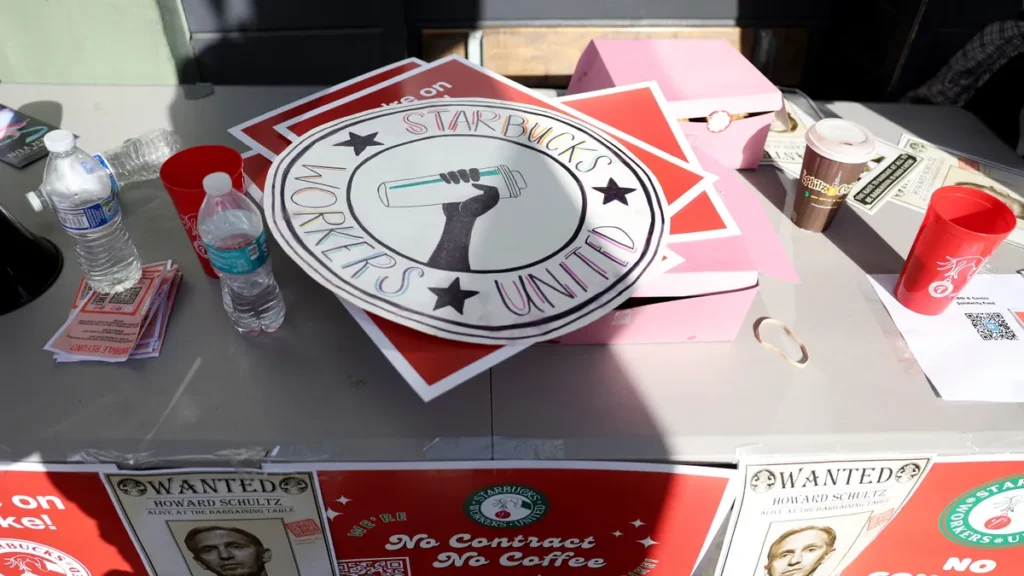Starbucks Workers United launches 65-store strike
Summary
Starbucks Workers United (SBWU) has launched an open-ended strike at at least 65 Starbucks stores across 40 cities, timed to coincide with the company’s Red Cup day. The union says more than 1,000 workers are taking part and that actions could broaden; over 550 Starbucks locations are now unionised nationwide.
The move follows a strike vote in late October/early November in which more than 92% of participating union members backed strike action. SBWU says national bargaining has stalled and cites widespread alleged unfair labour practices; the union has filed numerous NLRB charges. Union leaders describe this as a major escalation — potentially the longest and most serious strike in Starbucks’ history if sustained.
Key Points
- SBWU launched open-ended strikes at 65 stores in 40 cities, involving roughly 1,000 workers.
- The action coincides with Red Cup day and follows a 92% strike vote among participating union members.
- The union says bargaining collapsed over economic proposals and alleges repeated labour-law violations, prompting many NLRB charges.
- SBWU has prepared shopfloor leadership (strike captains) to coordinate and potentially expand actions.
- Starbucks has invested in hiring assistant store managers and in-store labour, but has not publicly commented on the strike.
- Legal and political factors — including shifting NLRB dynamics and potential decertification pushes — add pressure on both sides.
- Escalation risks affecting store operations, customer traffic, labour costs and the company’s broader recovery strategy.
Context and relevance
This is a significant escalation in the Starbucks-SBWU dispute. After four years of vigorous organising, the union is moving from symbolic, time-limited actions to open-ended work stoppages — a strategic step that raises the stakes for bargaining and for store operations. For HR teams and employers more widely, the story signals growing potency of shopfloor organising, the operational impact of coordinated labour action, and how labour disputes can intersect with investor and recovery narratives for large consumer brands.
Why should I read this?
Because this is a proper escalation — not just another headline. If you care about workforce risk, labour relations, store-level staffing or the ripple effects on operations and costs, this could change the calculus for similar employers. It’s also a useful case study in how organised, on-the-ground leadership (strike captains, shopfloor organising) can amplify industrial action.
Author note
Punchy: This one matters. SBWU shifting to open-ended strikes is the clearest sign yet that the union intends to turn leverage into sustained pressure — and Starbucks faces both operational headaches and reputational risk if talks don’t resume.
